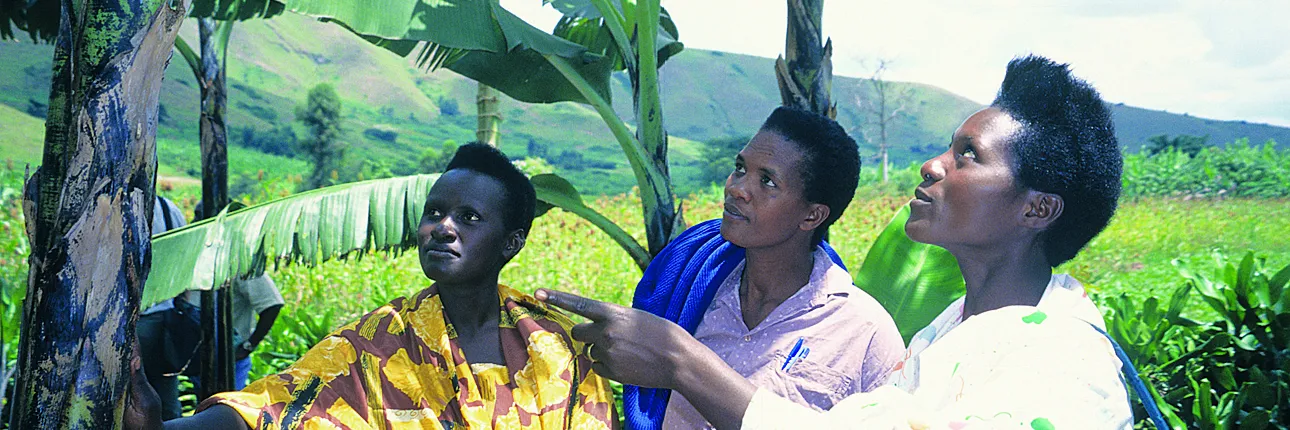Book project: where the land is greener - case studies and analysis of soil and water conservation initiatives worldwide
The project draws on 12 years of experience within the WOCAT programme to examine SWC from a global perspective, covering various land use types and addressing global concerns such as desertification, poverty, water scarcity, and conflict.
- Home
- Book project: where the land is greener - case studies and analysis of soil and water conservation initiatives worldwide
About the project
In the field of Soil and Water Conservation (SWC), the WOCAT Database is unmatched. A sample of this Database is presented in the book, “Where the land is greener – case studies and analysis of soil and water conservation initiatives worldwide”. Published in 2007, it is still relevant today. It was the first WOCAT publication in which SLM case studies were published in a standardized format and these practices are still applicable – from digging water harvesting pits in dry stream beds to carpeting the ground with green cane mulch.
The book draws on 12 years of experience within the WOCAT programme to examine SWC from a global perspective, covering various land use types and addressing global concerns such as desertification, poverty, water scarcity, and conflict. It contains an extensive range of case studies: 42 conservation technologies and 28 approaches from 23 countries, and sets new standards for systematic documentation, evaluation, and dissemination of knowledge on Sustainable Land Management. Policy points for decision-makers and donors offer new impetus for further investment to make the land greener. The book was published by The Technical Centre for Agricultural and Rural Cooperation (CTA), the United Nations Environment Programme (UNEP), the Food and Agriculture Organization (FAO), and the Centre for Development and Environment (CDE).
By collating real-life examples from the field, the book’s main aim is to highlight and analyse cases of SLM from various parts of the world. It seeks to demonstrate that there are possibilities of maintaining land in a productive state, improving conditions where there has been degradation, and rehabilitating badly degraded land. Links are made with the Millennium Development Goals (MDGs) and the various global environmental conventions – on desertification, climate change and biodiversity – and to the pervasive issue of poverty, particularly rural poverty.
A secondary aim is to provide and promote a prototype for documentation of knowledge at national and regional levels. WOCAT has long supported and encouraged data collection, and attempted to stimulate interest in documentation, evaluation, and dissemination of knowledge as a means for monitoring the success of land management practices. We hope this book will encourage the compilation of national and regional soil and water conservation achievements and experiences, and the production of overviews. The four-page formats for the presentation of case studies, which are based on the WOCAT basic questionnaires, can act as a basis for further systematic compilation to maintain consistency and aid comparison. The consequent inventories and analyses will provide a reliable basis for decision-making – at local, national, and regional levels.
Project results and impacts
In reviewing the conclusions, it has been possible to identify a number of related points that have clear policy implications for planners and decision-makers in governments and development agencies. These are presented in boxes following each of the sets of conclusions. Given that they are based on a global-level analysis, they may require fine-tuning and more explicit formulation to reflect specific national and
regional situations. These policy points reflect, furthermore, ‘what’ needs to be done rather than ‘how’ it can be achieved. Once again the particular circumstances must be taken into account to define specific strategies and the activities that are appropriate in each case. This global overview provides a ‘model’ that could be used for the comprehensive documentation and analysis of experience leading to refined policy guidelines at the national and regional levels.
For further details you are invited to download the PDF version of the book.
Publications

Countries
Contact
 Switzerland
Switzerland
SLM Practices documented within this project
Project duration
2003 - 2007

Technical Centre for Agricultural and Rural Cooperation (CTA )

Food and Agriculture Organisation (FAO)

United Nation Environment Programme (UNEP)







